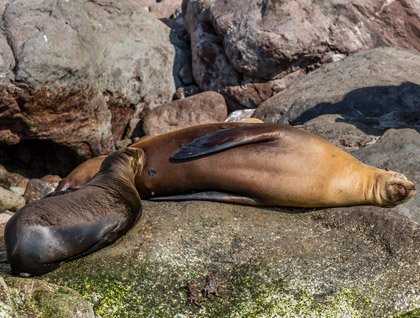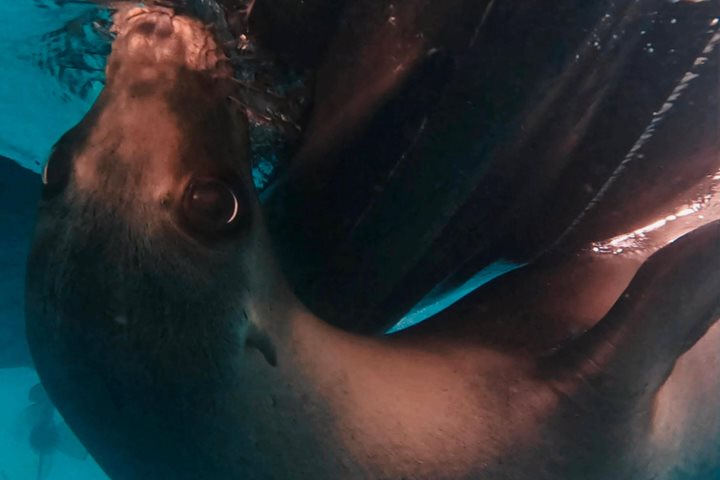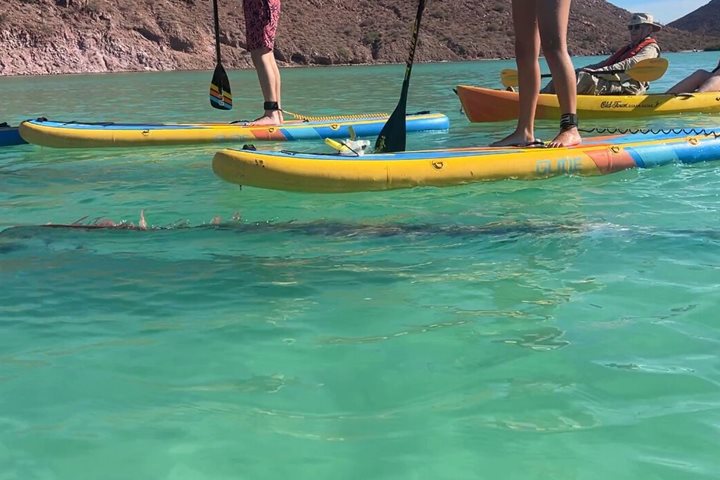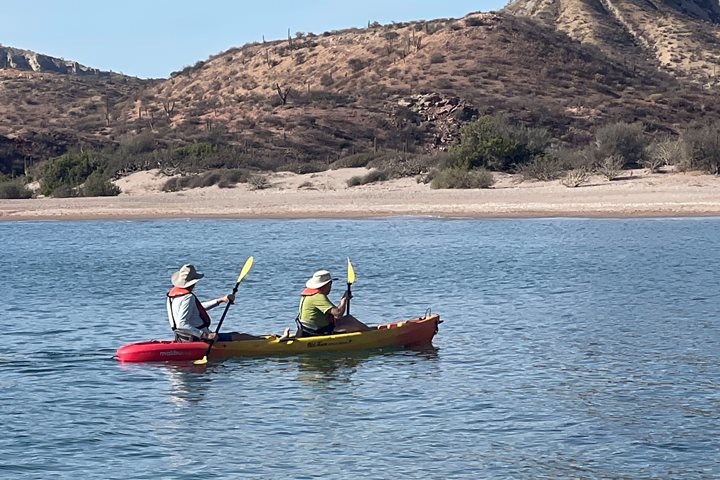A lone humpback whale greeted early risers on National Geographic Sea Lion this morning as we left our anchorage at Monument Bay on the south side of Isla Tiburón, headed for one of the most remote islands in all of the Sea of Cortez, Isla San Pedro Mártir. CT and I have spent many, many days and nights on this guano-covered, cardon topped island, and for very good reason—deep-water trenches are just to the south and the west. Deep-water means cool, nutrient-rich waters upwelling around the island and this leads to one of the greatest abundance of marine bird and mammal species in the entire Gulf of California and today that abundance was on full display!
After breakfast expedition landing craft cruises yielded excellent looks at red-billed tropicbirds nesting, brown pelicans, brown boobies, blue-footed boobies, Herrmann’s gulls, yellow-footed gulls, magnificent frigatebirds, and of course hoards of the little “bobitos” that we have written about before. The sky was filled with birds of all shapes and sizes and the raucous cacophony told us of the sheer abundance of bird life on this island.
As for marine mammals, this island has one of the largest colonies of breeding California sea lions to be found in the Gulf of California. Mothers nursing pups were seemingly on every available rock outcropping as well as on all exposed beaches. Youngsters followed our expedition landing craft, reveling in the propeller outwash our motors made, each trying to get closer than their fellows to inspect us. Huge bulls would patrol the waters just of the beach, calling to their harem as if to warn them. For their part the adult females tended to remain snoozing and just ignore both the noisy bulls and our inflatable boats.
One of the highlights of the day was certainly the Guadalupe fur seals. We found a pair of adults on the island itself, and later at sea we spied an adult male taking a siesta wrapped in sargasso. Guadalupe fur seals are usually only found on the Pacific side of the Baja Peninsula, and occasionally in the very southern part of the Sea of Cortez. These animals were far north of their normal range, a phenomenon we have observed for the last few years here at San Pedro Mártir.
The deep offshore waters beckoned us to look for marine mammals and our search efforts really paid off! First a pair of fin whales gave us repeated good looks and photo opportunities. Then bottlenose dolphins performed their magical leaps and somersaults, eventually leading us to a small pod of about two dozen short-finned pilot whales. Mixed into the pod was a mother with the smallest of calves, whom she was very happy to acquaint with the ship. Further cruising produced an even larger group of perhaps 50 more pilot whales, always in the company of the bottlenose dolphins. Two scheduled lectures were postponed in favor of the marine mammals as we stayed with whales and dolphins right through the sunset. Our day ended as it had begun, in the presence of whales and wildness!









